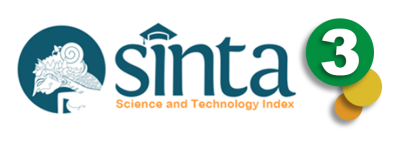STRATEGI PEMASARAN DAN PENGEMBANGAN USAHA KOPI ARABIKA RAKYAT DI DESA KAYUMAS KECAMATAN ARJASA KABUPATEN SITUBONDO
Abstract
This study aims to identify and analyze the marketing strategy and business development of the people in the village arabica coffee Kayumas Arjasa District of Situbondo. The analysis used is using the marketing mix and SWOT analysis are presented in descriptive quantitative.Elaboration of the marketing mix is done by using the 4P covering Product, Price, Place and Promotion, that illustrates clearly how the state of the arabica coffee farming in accordance with 4P elements. Arabica coffee farming development of the people described in detail using SWOT analysis. The first stage is to analyze the facts about the state of farming in the village Kayumas based on internal factors and external factors then scoring. Scoring results are then analyzed to the next stage of using the Matrix Competitive Position based on total scoring results of internal factors and external factors. Then proceed to the second stage is to use Matrix Grand Strategy based on the results of scoring of each variable on the internal and external factors including the strengths, weaknesses, opportunities and threats. The last stage is to analyze each element on each variable internal and external factors which will then generate alternative strategies and subsequently formulated into a strategic plan to do in the short term and long term. Based on the SWOT analysis used in this study, suggest that the arabica coffee farming people in the village are in a position Kayumas White Areas which are potentially powerful position which means arabica coffee farm in the village of prospective Kayumas have the opportunity and competence to continue these efforts.
Downloads
References
Anonim. Kualitas Kopi Arabika Desa Kayumas (Media Online Publik Nasional.com), rabu, 12 Januari 2011, 23.55
Budiman. 2012 Prospek Tinggi Bertanam Kopi. Yogyakarta : Pustaka Baru.
Gitosudarmo, I. 1994. Manajemen Pemasaran. FE Universitas Gajah Mada, Yogyakarta.
Haryati, Teti. 2012. Teori Efisiensi.(10 Juni 2013)
Hazali. 2012. Pengertian Pemasaran. [14 April 2014].
Hermawan, R. 2008. Membangun Sistem Agribisnis. [04 April 2013].
Ismail, dan I Nyoman Nurjaya. 2012. Wajah Baru Agrarisce Wet. Jakarta: Elsam-Sawit Watch-Pilnet.
Suciati, 2006. Strategi dan Prospek Pemasaran Susu Sapi Perah di KUD Sumber Makmur Kecamatan Ngantang Kabupaten Malang
Fadeli, 2006. Prospek Pengembangan dan Analisa Pemasaran Jeruk Siam, Jember : Fakultas Pertanian Universitas Jember
Toguria dkk, 2013. strategi pengembangan agribisnis kopi mandailing. Tapanuli
Kotler, Philip. 1987. Manajemen Pemasaran. Jakarta: Erlangga.
Narbuko, C., & Achmadi, A. 2004. Metodologi Penelitian. Jakarta : PT. Bumi Aksara.
Sugiyono. 2008. Metodologi Penelitian. Bandung : Alfabet
Soetriono, Suandari, A dan Rijanto. 2006. Pengantar Ilmu Pertanian. Jember: Bayumedia.
Syairdama. 2013. Analisis Pendapatan Petani Kopi Arabika. Agribisnis Kepulauan, 2(2): 44-108
Rangkuti, Freddy. 2014. Teknik Membedah Kasus Bisnis (Analisis SWOT). Jakarta : PT Gramedia Pustaka Utama.
Syamsulbahri, 1996. Bercocok Tanam Tanaman Perkebunan Tahunan. Gajah Mada University pers, Yogyakarta
Nasution S. 2004. Metode Research (Penelitian Ilmiah). Jakarta : PT. Bumi Aksara

This work is licensed under a Creative Commons Attribution 4.0 International License.






















